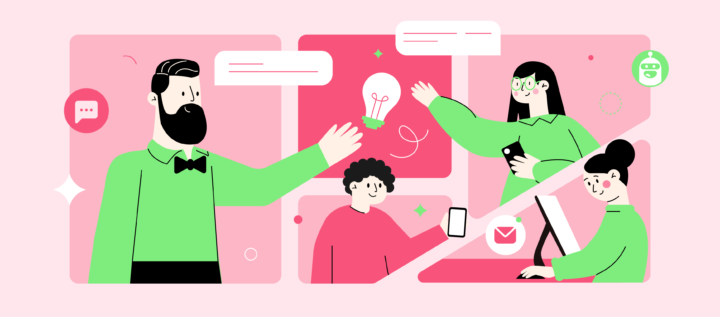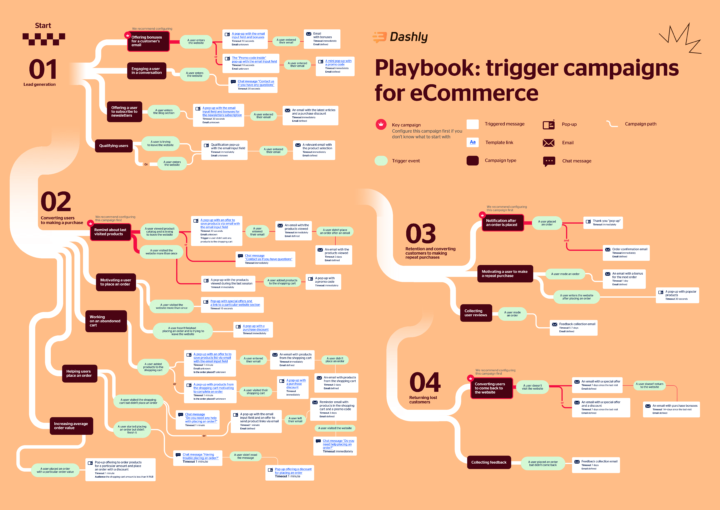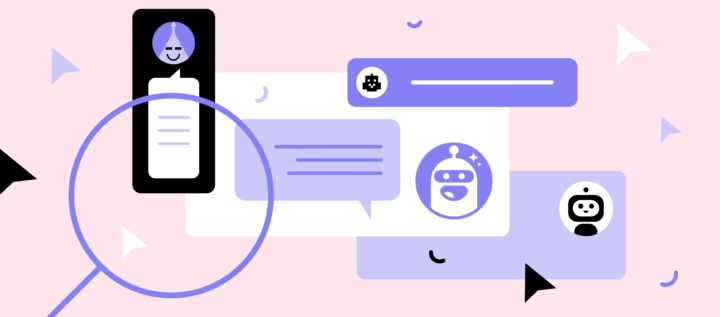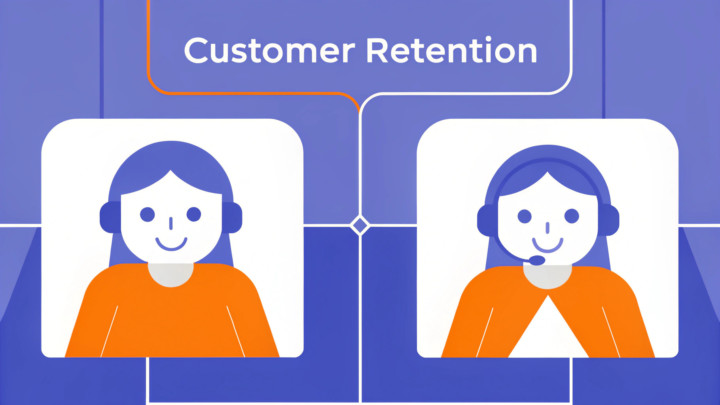Why is Omnichannel Communication Essential for Ecommerce?

Being omnichannel means interacting with your customer through a set of communication channels related to each other. The purpose of this approach is to gather as much information on your customer as possible and use it to improve customer experience.
Within the omnichannel framework, the journey from the first touchpoint to purchase gets a bit more complicated than the usual “I came — I saw — I bought” sequence. An omnichannel funnel may look like this:
1. A person wants to make a new start, signs up for a gym and buys a new fitness tracker.
2. They search for it, see some options, and click the links.
3. Then, they assess interesting alternatives and contact assistants via live chat to ask questions.
4. They discover everything they need but postpone the final decision and don’t make a purchase.
5. A couple of days later, they realize they desperately need a fitness tracker. They contact the seller of the best product and make an order.
6. Then, a person downloads a mobile app that facilitates their experience and helps work on their fitness.
7. The company’s support team contacts a customer through a messenger and says they can ask them any questions on using the tracker.
Being omnichannel depends on how you arrange communications. In the above example, the company gathered customer data, explored other products a customer was interested in (via product links), customer email and phone number (via live chat communication), message history, order date, and a messenger that a customer prefers and that can be used to communicate with them.
A user can later choose any means of communication, and the company will pull together all data that they have on a customer.
Omnichannel vs. Multichannel
“Multichannel” means using a lot of means to communicate with customers. “Omnichannel” assumes these channels are closely related to each other.
You may have a brilliant ad campaign on social media, a perfect user-friendly website, and customer support in messengers, but if they don’t work together, you’re not omnichannel.
Imagine a customer ordering something in a mobile app and then calling the support line to clarify their order details. If support agents know nothing about this and a customer has to explain their case all over again, this is an example of the multichannel approach.
Within the omnichannel approach, all customer data are stored in one place available to all responsible employees. In this case, support agents obtain the necessary information in a matter of seconds and can easily answer user questions.
Most companies nowadays intend to be multichannel. Nearly all of them run blogs and social media, maintain customer support. However, customers lack the coordination of these channels when they can easily swing between channels without losing anything.
Why be omnichannel?
Introducing the omnichannel approach is much harder than the multichannel one, but believe us, it’s worth it for 2 major reasons.
Several factors influence purchasing decisions
Some purchasing decisions are instant, but a person usually spends some time on them. They need to kick the tires, compare options, and decide on their budget.
Let’s consider a short example. Imagine you are selling dresses. Your potential customer found you on Instagram and your fancy profile encouraged them to visit your website and view the catalog. On your website, a customer subscribed to your emails with promos and special offers. Then, they found out about a special offer in an email and decided to exploit it. Here’s how they became your customer.
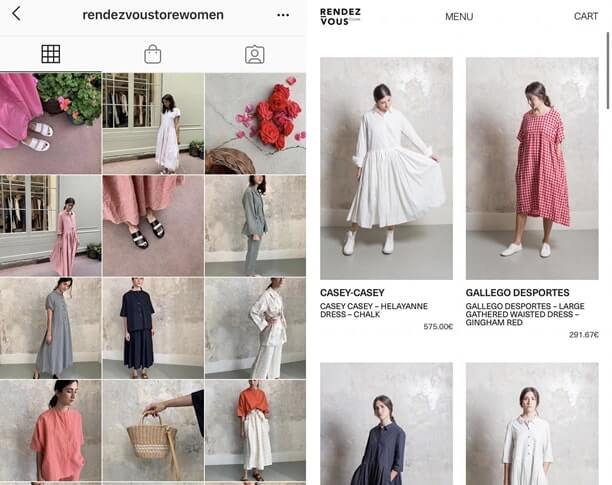
If an unknown store offered a discount to a user, they would likely decline it. A fancy Instagram account doesn’t motivate you to purchase. All these channels work together — if we had removed one stage of the sequence, the purchase wouldn’t have happened.
It helps you allocate budgets and improve customer experience
Imagine you’ve spent much money on paid search ads and you rely on it a lot. You’re ready for a flow of customers, but they didn’t come. Turns out, your website can’t handle the load by new users: your navigation is irrational, you don’t have the live chat, or don’t list contacts for feedback. That is, ads work, users visit your website, but then they can’t find what they were looking for on your website, and leave it. Your money is wasted.
The omnichannel approach means all channels are coordinated and work together — a customer gets all the information and support in full regardless of how they found you and how long their path to purchase can be. Plus, the more information you gather on your users, the better your messages get in terms of personalization — and this increases customer loyalty.
How to introduce the omnichannel approach?
Customers, not channels, are the most important component here. This approach isn’t a goal, it’s rather a means of providing a great customer experience.
Each company’s omnichannel strategy is unique. Below we’ll try to decode a potential strategy of company.
1. Website blog
Most people need help when looking for furniture for their homes — what fits what, what the interior style is, and so on. They will find your blog interesting, plus, you’ll prove your expertise to potential customers.

You need to research popular queries relevant to your business and prepare a content plan based on them. It’ll help you acquire traffic from search engines and get loyal followers. Offer them to share their emails and subscribe to your updates not to miss new blog articles.
2. Emails
Another way to get an email of a potential customer is to offer them a promo code with a discount. Share the code in the first email and send the following ones based on your email strategy.

Emails can be dedicated to narrower issues than blog posts, and be sure to associate them with updates. Email marketing is always more about buying than content marketing. You can advertise seeds in your emails and offer customers to contact you by phone.
3. Callback form
For some people it’s still more convenient to make an order by a phone call. Add the callback form to your blog and always include your phone number in emails.

Prepare your agents; they are about to consult customers on products, prices, and use features.
Please note that we’ve only listed some channels and a draft of the strategy. While each company can stick to their channels, we are offering you some basic recommendations.
- Get ready to collect a lot of data. Here’s what you should know about your customer to make your work effective: their IP address, email, phone number, online cookies, and probably social media accounts.
- Work well on the Customer journey map. Brainstorm the perfect journey of the perfect customer and explore the channels helping them go through this journey. Base your strategy on your findings.
- Consider the environment. In your omnichannel strategy, take the seasonality, the number of repeat purchases, and the scale of your business into account. For example, it makes no sense to run targeted ads during a “low” season, but it’s high time to develop content marketing.
Examples of the omnichannel strategies
It all looks simple in theory, but in reality, companies need to do a lot of work to become omnichannel. Let’s see how three giant companies did it.
Disney
Disney’s omnichannel strategy is just flawless. Take Disney’s touring service as an example. First, their website is adjusted to mobile devices. Even moving elements look the same on a mobile device as on the desktop.
After you book your tour, you can use the My Disney Experience tool to plan your trip: order lunch, pre-book a fast pass to the attractions, etc.

When in the park already, you’ll need a special mobile app that will tell you where each attraction is located and if queues in front of them are big.
You can go even further and install the Magic Band app (also a Disney product) which will store the key to your hotel room, tickets, photos, and receipts. Disney successfully communicates with its customers through different channels: they are related to each other but exist separately. This is a classic and very successful example of the omnichannel approach.
Sephora
This beauty giant has combined online and offline shopping. In each store, the customer can find special tablets. On the tablet, you can open your profile in the online store (My beauty bag). This allows a customer to take a look at the products they added to their shopping cart online, virtually test cosmetics on their photo with a special application, and make a purchase in any way they find convenient.
Starbucks
One glance at the Starbucks mobile app is enough to understand why it is considered one of the best examples of the omnichannel approach. It’s all about the loyalty card. The information on the number of bonus points is instantly available in the application, by a phone number, and on the coffee shop website. Any change in your profile or card balance will be automatically sent to all channels.
The omnichannel framework is available for companies of all sizes. Start by thinking first of all about your customers’ interests. Most likely, this will be the beginning of a great and strong friendship.


